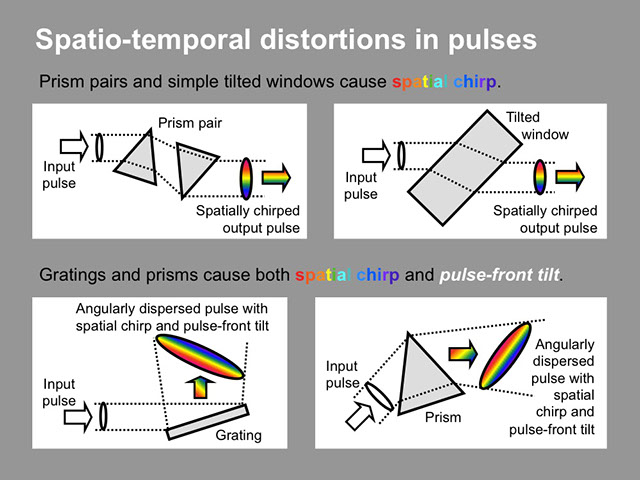Spatio-temporal Distortions
Okay, so we're very good at measuring even very complex light pulses in time. But what about in time and space? Before we consider this very general problem, it's helpful to understand the most common such distortions: the first-order spatio-temporal distortions. And the best known of them is angular dispersion, in which different colors propagate in different directions, an effect known since the 17th century.


Angular dispersion also separates the colors in space, an effect called spatial dispersion (or spatial chirp in analogy with temporal chirp). So a second, inverted prism will cancel out the angular dispersion, but not the spatial dispersion.
Prisms cause yet another spatio-temporal distortion, called pulse-front tilt, which is exactly what it sounds like. Because angular dispersion causes pulse-front tilt, a diffraction grating, which is more dispersive than a prism, introduces even more pulse-front tilt. We wrote papers in 2005 and 2010 on the general theory of these interesting effects. We even discovered five new ones, including the "ultrafast lighthouse effect"!
Finally, notice that, for the pulses emerging from the prism and grating, the bluer colors emerge first and the redder colors emerge last. Negative chirp! This is the basis for the well-known pulse compressor that compensates for positive chirp.
